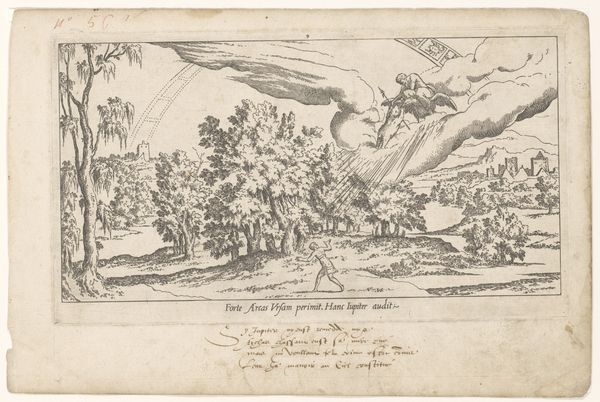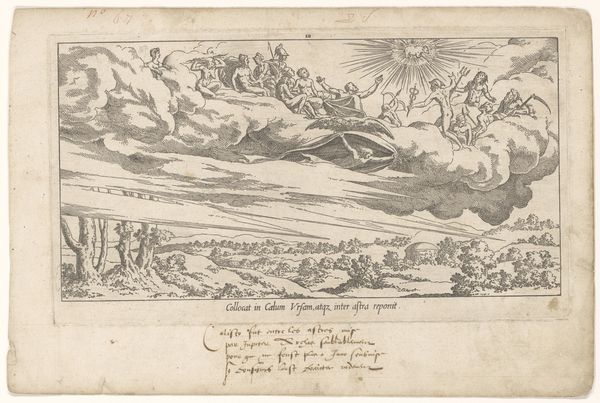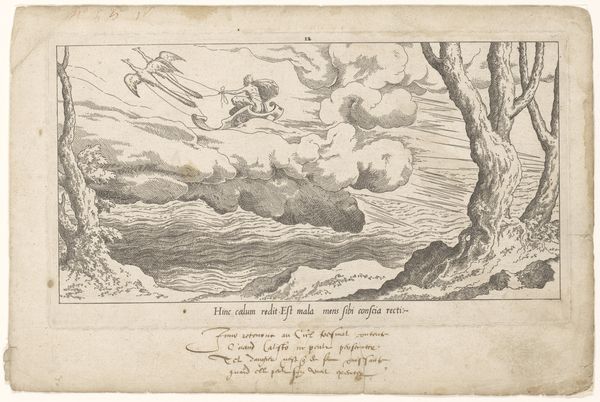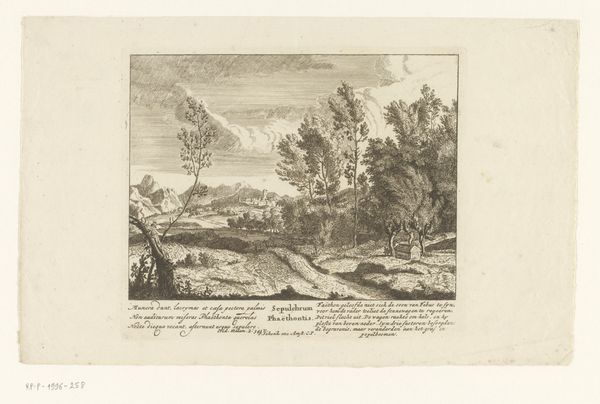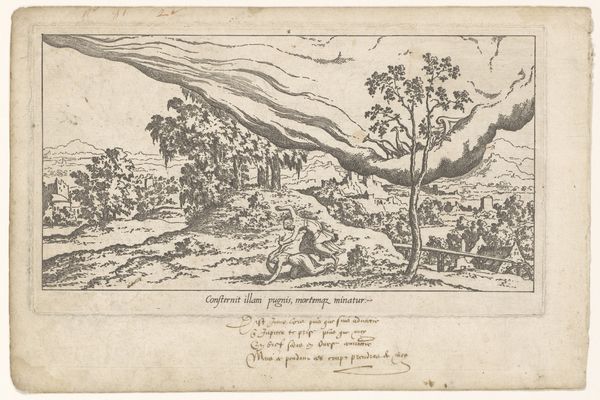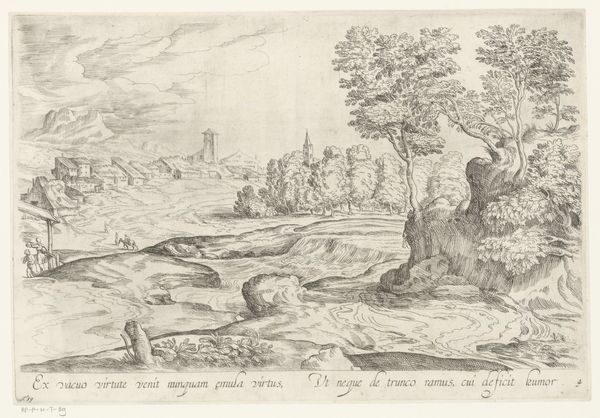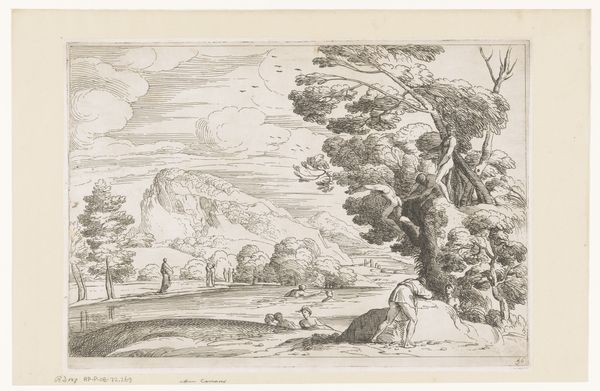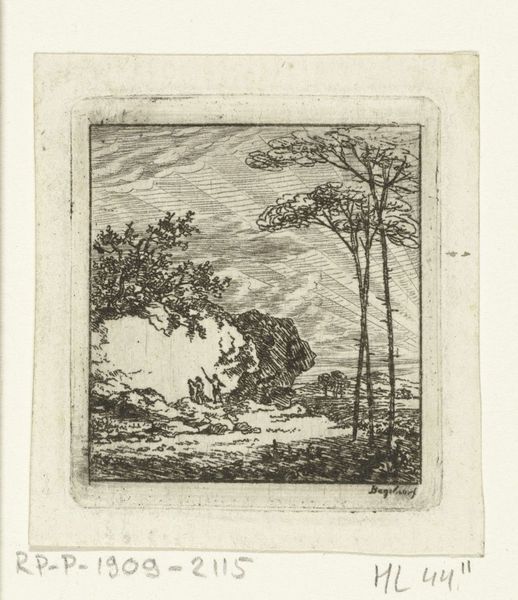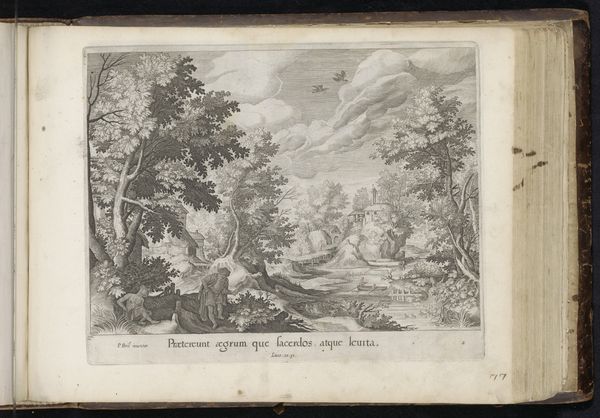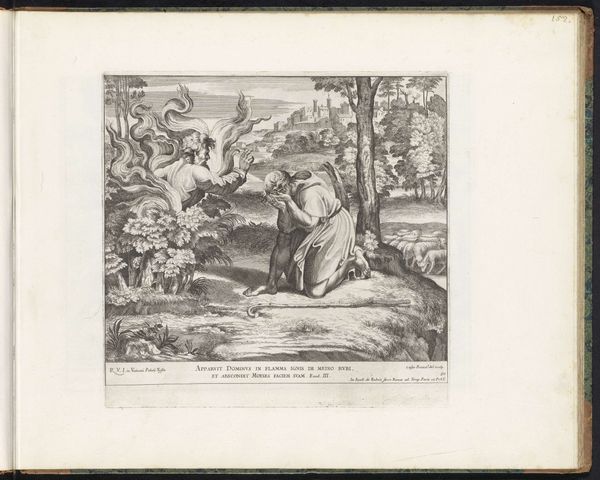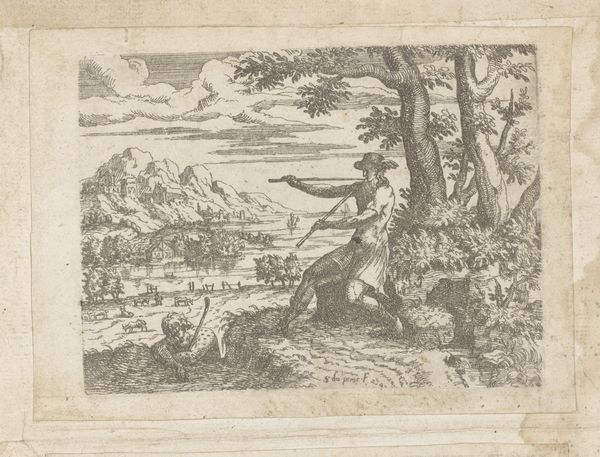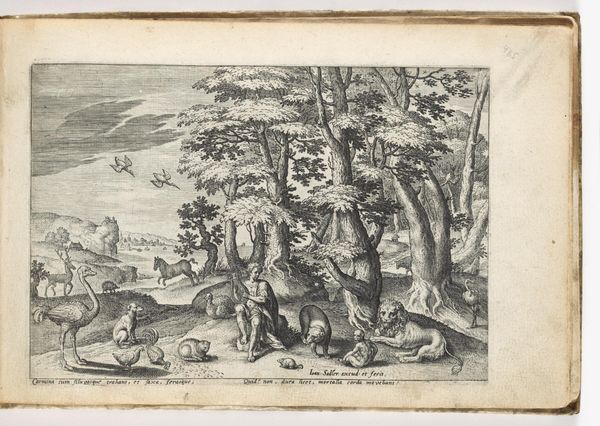
print, etching, ink, engraving
# print
#
etching
#
landscape
#
mannerism
#
ink
#
history-painting
#
engraving
Dimensions: height 173 mm, width 263 mm, height 131 mm, width 232 mm
Copyright: Rijks Museum: Open Domain
Curator: This print, attributed to Léon Davent and created around 1547 to 1550, depicts a scene from Ovid’s Metamorphoses: Juno transforming Callisto into a bear. It's rendered in ink using engraving and etching techniques, characteristic of Mannerist printmaking. Editor: It’s amazing! My immediate feeling is...claustrophobic. There’s a looming intensity, despite the pastoral setting. The composition crams the drama into a relatively small space, and Juno’s chariot floating in the clouds above, feels oppressive somehow, instead of freeing. Curator: Absolutely. The Mannerist style often embraced a certain tension. If we examine the narrative Davent presents, we see the jealous rage of Juno enacted through a violent act of transformation. Consider the patriarchal structures at play – Jupiter's infidelity and the consequential punishment inflicted upon Callisto, all observed, and perhaps even perpetuated, by Juno. It becomes a potent visual statement on power, gender, and agency. Editor: Yes! It's like the landscape itself is a silent witness, maybe complicit. That cityscape in the background, normally idyllic, now feels almost... judgemental. And that bear...so vulnerable and exposed. The way the etching captures the texture of her fur, so lifelike, somehow adds to the tragedy. It's like she’s caught between worlds. Curator: The beauty and tragedy are really at the core of understanding Callisto's plight. The transformation can also be interpreted within the broader context of art history, thinking about shifting representations of the female body, myths and how power is communicated through images of metamorphosis. It compels us to consider contemporary parallels of gender based power struggles. Editor: It’s so powerful how a relatively small etching can hold so much… weight. It almost feels too brutal to gaze at for too long. Thanks for giving me new eyes on this one, I’m leaving here with something. Curator: And I, similarly, seeing your emotional response makes me feel again how very vital and pertinent these dialogues are still, today. Thank you.
Comments
No comments
Be the first to comment and join the conversation on the ultimate creative platform.
